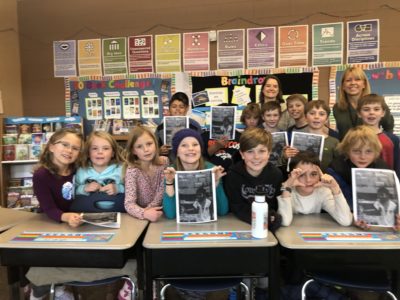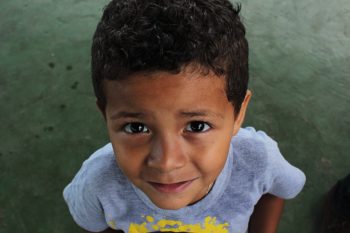 Exercise and emotional health are more interrelated than many people realize. Just as emotional wellness promotes good physical health, keeping our bodies healthy can help prevent, even heal, emotional issues. Exercise is important because it helps improve mood, self-esteem, self-image, quality of sleep, attention, academic performance, interpersonal skills, and coordination, while creating a strong healthy body. All of these are important when coping with stress and trauma.
Exercise and emotional health are more interrelated than many people realize. Just as emotional wellness promotes good physical health, keeping our bodies healthy can help prevent, even heal, emotional issues. Exercise is important because it helps improve mood, self-esteem, self-image, quality of sleep, attention, academic performance, interpersonal skills, and coordination, while creating a strong healthy body. All of these are important when coping with stress and trauma.
Here are some ideas to help you and your child stay physically and emotionally healthy using exercise.
Movement
Today’s kids just don’t move enough—they spend way more time in front of a screen than previous generations did. So helping your child learn to weave daily exercise into a healthy lifestyle is an important part of a parent’s job. Children typically follow the example of their parents, extended family, or friends, so modeling this habit yourself can make a big impression.
Some kids love to exercise, some don’t. If they love to exercise it will be easy for you to get them to go outside and spontaneously move their bodies. There is a fine balance between letting them determine what they want to do and directing them. The best is to try many activities and sports and see what they like the most. A child who learns how their body moves will build body awareness as well as self-awareness. Gymnastics, dance, yoga, and martial arts are particularly good for teaching body awareness. These skills can help them listen to their bodies, and in turn, help them avoid injuries in other sports and activities.
For kids who don’t like to participate in sports, be creative in getting them to move. Dance around the house, chase them (in fun), play tag, be silly, jump on a trampoline (or bed ), do a quick clean-up game that includes running around. The younger you get them to move, the more inclined they are to continue as they get older, even into adulthood, which will prevent obesity and other serious health problems, now and in the future. Remember that FUN is the keyword for encouraging kids to move their bodies!
Yoga
Some see yoga as a class of stretching. It is about stretching, but it’s so much more. Yoga is also about mindfulness, breath control, body awareness, meditation, and it can also be very physically challenging, depending upon the class. Beyond the physical gains from yoga, there are many emotional benefits from it too. Yoga helps the body relax and move from a sympathetic state to a parasympathetic state, relieving stress and tension. The brain releases calming hormones instead of stress hormones, and it’s an avenue for self-expression and awareness. Yoga also helps improve immune function and digestion. I love yoga but I was resistant for years. My excuse was, “I can’t do yoga, I am the most unlimber person in the world!” When I finally tried it, I realized that our bodies can become more limber with practice. It was hard at first but I started slow with a video in my basement and then moved to a class. Now I love it and can’t go a week without it. Oh how I wish I would have done it with my kids when they were young! A neighbor recently told me that when he began doing yoga daily, within 10 months he’d lost 40 pounds, and was able to stop taking medication for both physical and emotional issues, saving him hundreds of dollars per year.
Begin yoga wherever you feel comfortable. You can start by trying free videos on YouTube or picking some up from the library. When your kids see other kids doing yoga on the video, they will be more encouraged to do it themselves. Going to a class together will create experiences and memories you both will cherish.
Movement and exercise are also keys to longevity. Research has shown those who live into their 90’s and even 100 move every day. Helping yourself and teaching your child these lifelong tools will benefit everyone. If you are feeling resistance, you can always download The Imagine Project journal to help you move through your resistance. Good luck and enjoy!
Take care,
Dianne
Dianne is the founder and CEO of The Imagine Project, Inc., a nonprofit organization that helps children K-12 (and adults) process and heal from difficult life circumstances through expressive writing. Dianne has her Masters in Psychiatric/Mental Health Nursing, is a thought leader in stress and trauma in children and has written multiple award-winning books including The Imagine Project: Empowering Kids to Rise Above Drama, Trauma, and Stress. She is an international speaker, lives in Colorado and has 3 grown children. Learn more about The Imagine Project at www.theimagineproject.org.

 Unfortunately, we live in a world where trauma happens. It might be a school shooting, a natural disaster, or a significant loss of a student, teacher, or admin, but it happens more often that we’d like. I recently sat in with a classroom of 4thgraders who lost a fellow schoolmate to a fatal disease—a significant school trauma. Their journey in understanding what happened is complicated, but I was grateful to be there to help them through it using The Imagine Project.
Unfortunately, we live in a world where trauma happens. It might be a school shooting, a natural disaster, or a significant loss of a student, teacher, or admin, but it happens more often that we’d like. I recently sat in with a classroom of 4thgraders who lost a fellow schoolmate to a fatal disease—a significant school trauma. Their journey in understanding what happened is complicated, but I was grateful to be there to help them through it using The Imagine Project.
